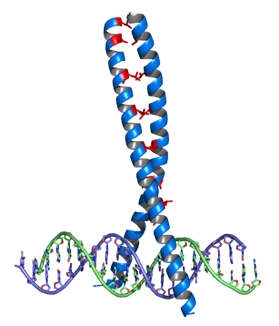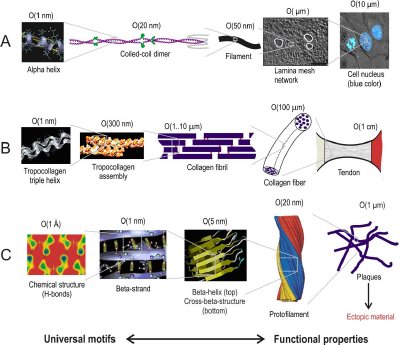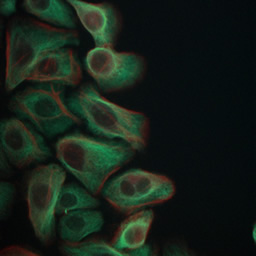 |
Protein Materials Lab School of Materials Science and Engineering (MSE) |
|
|---|
The group research interests are in synthetic biology, protein engineering and cell biology for both biological and engineering applications.
Synthesis of protein-based materials. We are interested in the design and synthesis of protein-based materials for biomedical and engineering applications. Using genetic approach, we build materials at the DNA level and synthesize them using the bacterial protein synthesis machinery. This method allows complete control over the chemical and physical properties of the material, which can be customized according to the desired application.
 |
 |
|---|
Figure sources: (left) Leucine zipper, wikipedia; (right) www.azom.com
Projects in the lab:
1. Substrates for artificial skin and wound healing. We are interested in designing and developing protein-based biomaterials for promoting accelerated wound healing. At the same time, provide a systematic understanding of the key material properties (both chemical and physical) that are relevant for rapid wound closure. The movie shown above are typical time-lapse movies obtained from our wound healing experiments. Here, human corneal epithelial cells are migrating over an artificial protein substrate containing cell-binding domains derived from fibronectin.
Figure sources: (left) Human corneal epithelial cells stained for tubulin (green) and actin (red); (right) Typical time-lapse movie wound healing of cell sheets. Copyright E. Fong.
2. Controlling delivery using protein hydrogels. Self-assembling peptide sequences or protein motifs have been used to form physical hydrogels. Using interactions between positively and negatively charged amino acids, we have designed de novo amino acid sequences that can self-assemble under physiological conditions. We make use of such interacting peptide pairs to control the rate of diffusion of protein therapeutics within a protein hydrogel. By controlling the strength of the interaction, we can tailor a versatile hydrogel platform for siRNAs delivery.
3. Self-assembling nanoparticles for inorganic metal synthesis. Elastin-like peptides have the ability to self-assemble in response to changes in temperature, pH and salt concentration. When these elastin-like peptide sequences are fused to metal-binding sequences, they will have the additional capability to nucleate the growth of metallic nanocrystals. By controlling the self-assembly of the elastin blocks, we can control the size and shape of the metallic nanoparticles, which have useful applications in wound healing, nanocatalysis and water treatment.
4. Ecology Biotechnology. There is growing interests to recover phosphate in sludge waste water due to the depleting sources of natural phosphate in the world. However, the main challenge for efficient removal and recovery of phosphate from sludge is the limited growth of the microbial community in sludge waste water. Particularly, the PAOs (Poly-phosphate - accumulating Organisms) thrive at low temperatures 25 degC, and hence have reduced growth in warmer climates like Asia. In collaboration with NEWRI, we are evolving and isolating microbials that can survive higher temperatures with efficient phosphate removal.
We are also exploring means to recover bacteria using an external stimulus (i.e., magnetic field), as an approach for separating microbes from sludge.
